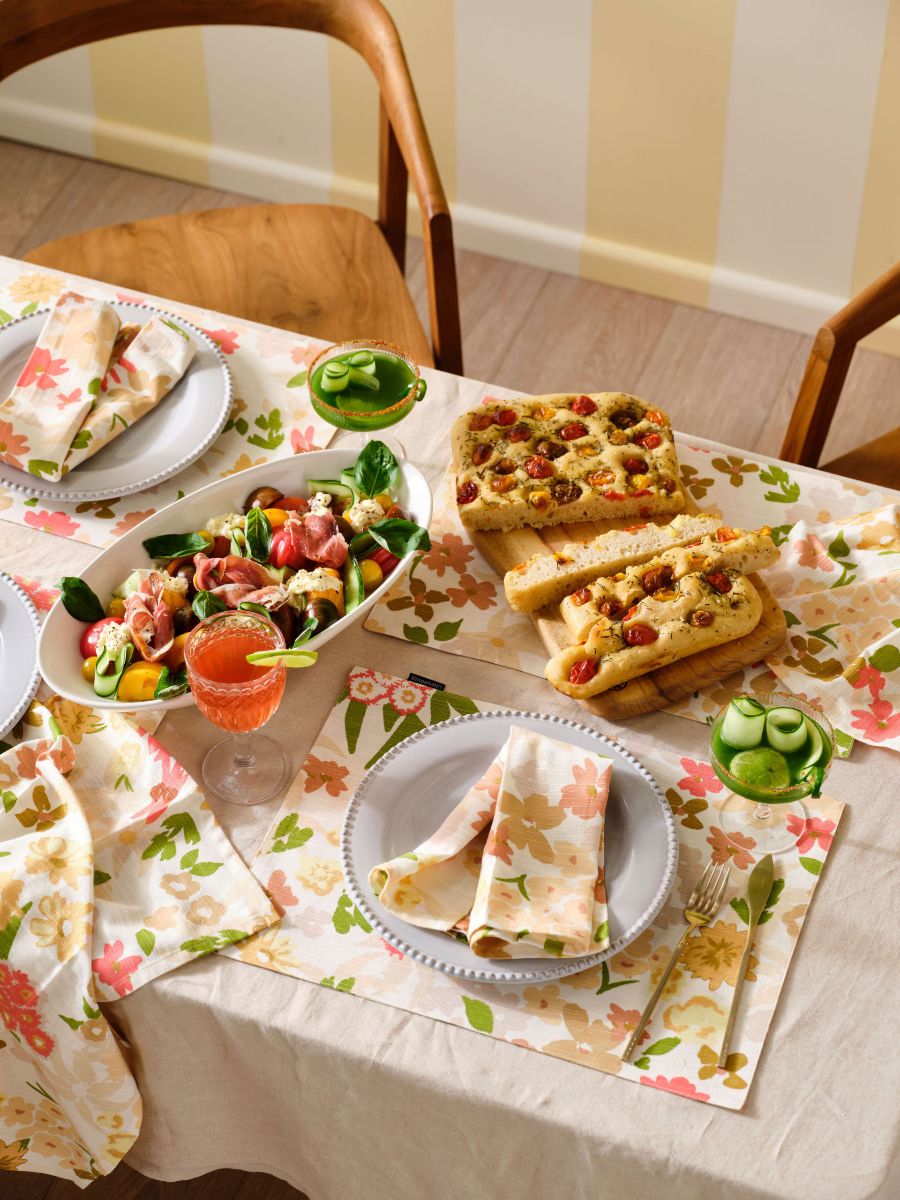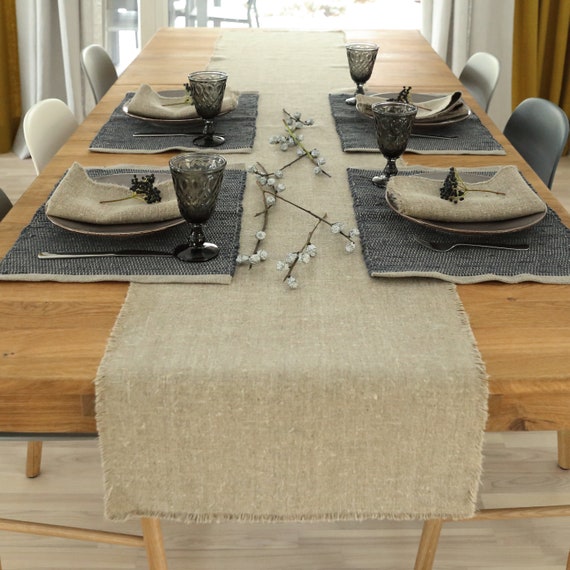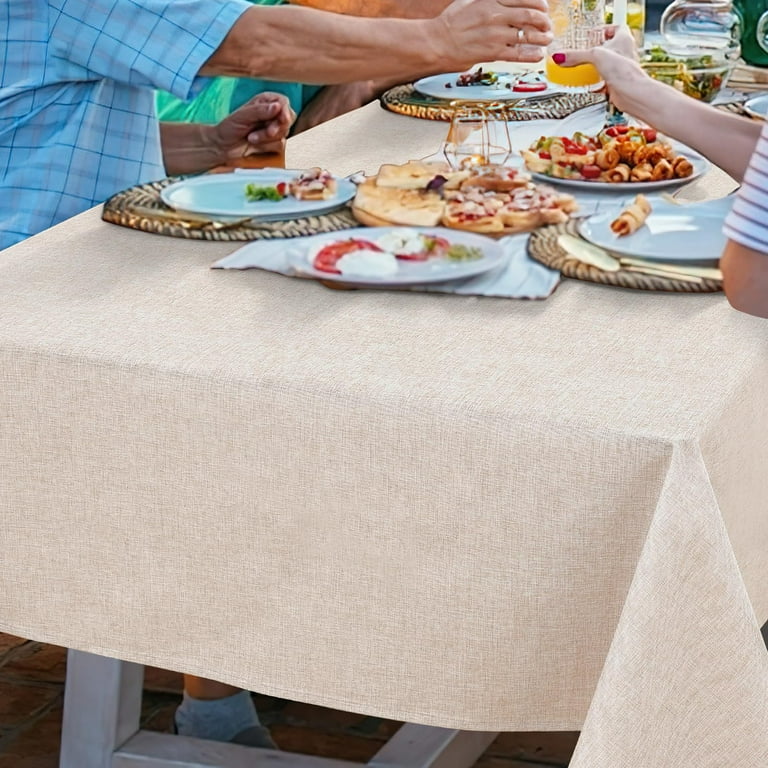Versatile Table Cloths: Designs and Fabrics for Any Event
Versatile Table Cloths: Designs and Fabrics for Any Event
Blog Article
Bed Linen Textile Advancements: Checking Out Modern Trends and Creative Applications in Style and Textile Market
From lasting production techniques to innovative weaving technologies, the development of linen is reshaping the landscape of the fabric market. As we dig into the realms of innovative design applications and the appearance of linen blends and hybrid fabrics, a new chapter unravels in which bed linen's duty in future fabric advancements takes center stage.
Lasting Practices in Bed Linen Production
Lasting techniques in bed linen manufacturing have actually come to be increasingly important in the fabric market's initiatives to decrease environmental effect and advertise moral sourcing methods. Linen, an all-natural fiber obtained from the flax plant, supplies a variety of advantages such as biodegradability, resilience, and breathability. Nonetheless, standard methods of bed linen manufacturing can entail substantial water usage, pesticide use, and energy-intensive procedures.
To address these obstacles, many textile producers are embracing sustainable techniques throughout the linen manufacturing procedure. This includes sourcing flax from natural ranches that stay clear of damaging pesticides and chemicals, implementing water-efficient retting strategies to essence fibers from the flax stalks, and using green dyes and coatings. Additionally, some business are investing in renewable resource resources to power their production facilities and decreasing waste with recycling and upcycling campaigns.
Technological Improvements in Bed Linen Weaving
With the expanding emphasis on sustainable techniques in linen manufacturing, the textile sector is now seeing a surge in technological innovations specifically focused on transforming the art of bed linen weaving. These technologies are reshaping the method linen textiles are generated, using raised performance, high quality, and creative thinking in weaving techniques.
Among the vital technological innovations in bed linen weaving is the combination of computerized looms. These sophisticated looms are furnished with software that permits intricate and complicated designs to be woven with accuracy. By digitizing the weaving process, producers can achieve higher consistency and precision in their bed linen fabrics.
Moreover, improvements in yarn spinning technology have made it possible for the manufacturing of finer and more resilient linen yarns - table cloths. This results in softer and smoother linen materials that preserve their top quality even after several uses and cleans
Furthermore, the growth of eco-friendly dyeing procedures and surfaces for bed linen fabrics is obtaining traction. These sustainable techniques not only lower the ecological impact yet also deal with the increasing consumer need for morally created fabrics.
Creative Design Applications for Linen
Ingenious creative methods are increasingly forming the creative layout applications for bed linen in the fabric sector. Linen's all-natural aesthetic appeal and capability to blend with other fabrics make it a favorite choice for creating unique garments and accessories that provide to the ecologically mindful consumer.
Furthermore, developers are explore bed linen in home style, utilizing its resilient and breathable nature to craft elegant furnishings such as drapes, bed linens, and upholstery. The appearance and drape of linen bring a feeling of class and convenience to interior rooms, adding a touch of beauty to contemporary homes.

Bed Linen Blends and Hybrid Fabrics

Crossbreed materials, on the various other hand, take the idea of mixing an action better by including additional components such as metal threads, recycled products, or conductive fibers. These ingenious fabrics not just expand the design possibilities but likewise present useful aspects like conductivity, antimicrobial properties, or improved sturdiness. Crossbreed materials are progressively being used in various sectors, including fashion, interior layout, and technological fabrics, where the need for multifunctional products is on the surge.
Bed linen's Function in Future Textile Innovations

In the realm of future textile technologies, linen is anticipated to be a principal in the development of innovative functional textiles. Scientists and developers are discovering means to boost bed linen's inherent high qualities via technical developments, such as incorporating clever textiles, nanotechnology, and efficiency coatings. These advancements aim to boost linen's efficiency attributes, making it suitable for a wider series of applications, from activewear to safety garments.
In addition, the combination of bed linen with other natural or artificial fibers opens up limitless possibilities for producing unique fabrics with unique see this homes and performances. By leveraging bed linen's attributes and discovering innovative blends, the textile sector is poised to introduce amazing developments that accommodate progressing customer requirements and sustainability requirements.
Conclusion
Finally, the expedition of sustainable techniques, technical improvements, creative style applications, linen blends, and its function in future textile technologies highlight the constant advancement of bed linen fabric in the modern style and fabric sector. Learn More Here With an emphasis on innovation and imagination, the adaptability and eco-friendly nature of bed linen make it a valuable material for producers and designers alike, paving the way for further growths and developments in the area of textiles.
As we dive right into the worlds of innovative layout applications and the introduction of linen blends and crossbreed textiles, a new phase unravels in which linen's duty in future fabric developments takes center stage.
Exploring the fusion of bed linen with various other materials has actually led to the introduction of cutting-edge blends and crossbreed textiles in the modern textile sector. Bed linen blends use an unique combination of the characteristics of linen with those of various other fibers, resulting in fabrics that have boosted homes such as increased resilience, boosted draping, and decreased wrinkling.The development of linen blends and crossbreed materials has actually set the phase for Linen to play a crucial function in driving future fabric advancements.In the world of future fabric technologies, linen is expected to be a crucial player in the advancement of innovative useful textiles.
Report this page